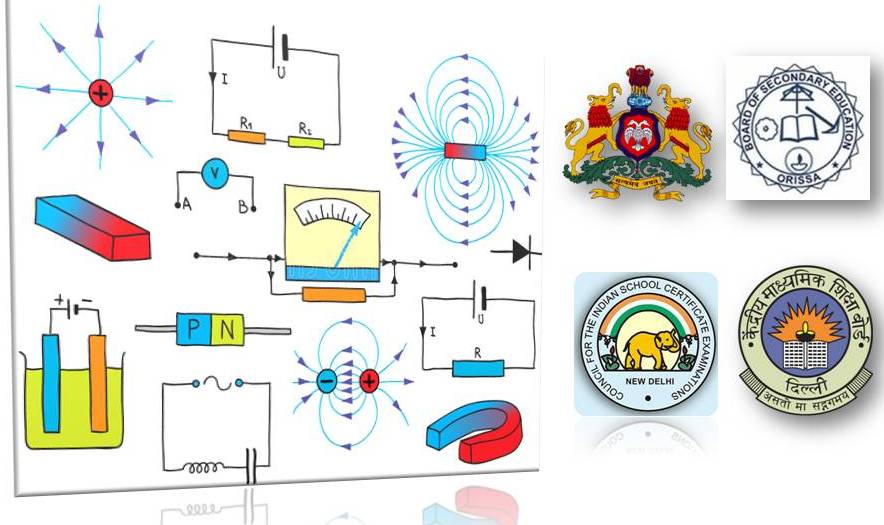Physics class tests for PUC, ISc, XII in the CBSE, ICSE (CISCE), State boards.
Subject: Physics
Test: Class test — III
Class: PUC — II (also good for ISC — II)
date: 5th August 2013.
Time: 55 minutes
Total marks: 35
Section A
Objective — 7 questions each carry 1 mark, all questions to be answered.
Question 1
Targets in X-ray tube are made of high atomic number metals. Examples are
A. Tungsten and Platinum B. Nickel and Chromium
C. Uranium and Plutonium D. Sodium and Mercury
Question 2
Electric and magnetic fields do not deflect which of the following
A. X-rays B. Y-rays
C. Electrons D. Cosmic Rays
Question 3
Why and
lines are produced — chose only one appropriate answer.
A. Electronic transitions B. Atomic collisions
C. Radioactive decay D. Nuclear transmutation
Question 4
Exactly why there is quantization of physical variables such as momentum, angular momentum, energy, orbital distance and speed?
A. Wave-particle duality B. Interference of waves
C. Particle acceleration to speed of light D. Resistance experienced by particles in conductors
Question 5
Cathode rays are streams of
A. Electrons B. X-rays
C. Nucleons D. High atomic number elements
Question 6
Kirchhoff’s loop rule is based on?
A. Conservation of charge B. Conservation of energy
C. Conservation of baryon number D. Conservation of lepton number
Question 7
Kirchhoff’s junction rule is based on?
A. Conservation of charge B. Conservation of energy
C. Conservation of baryon and lepton number D. Conservation of azimuthal quantum number
Section B
Subjective — 14 questions carry 2 marks each, all to be answered.
Question 8
If threshold frequency is Hz whats the work function of the metal in eV or joule?
Question 9
3 capacitors each are in series, whats their equivalent resistance?
Question 10
3 capacitors each are in parallel combination, whats their equivalent resistance?
Question 11
If a potential difference of is applied at two ends of a
long metal wire with current density
whats conductivity of the wire?
Question 12
In a Wheatstone bridge if and
are the resistors in one arm, and
what would the unknown resistor
in the
arm be?
Question 13
If work function of a metal is what would the maximum kinetic energy of any
be, given a light of energy of
falls on the metal? Whats the stopping potential?
Question 14
Name 4 sources of electric power that can be harnessed for household applications.
Question 15
If 3 cells of emf are connected in series with their + and – terminals connected in sequential order and each has a back-emf
whats the equivalent emf of the series?
Question 16
If a cell and
are connected in parallel with zero internal resistance for both whats their equivalent emf?
Question 17
For principal quantum number whats the speed of an electron in a hydrogen atom?
Question 18
What would be the wavelength of a radiation of energy ?
Question 19
For a free electron of speed with
what is the de-Broglie wavelength?
Question 20
If a conductor of length and area of cross section
carries a current of
, when a battery of emf with ideal terminal voltage
is connected across, what is the resistivity of the wire?
Question 21
In Thomson’s e/m experiment the is going in a circle of circumference
then whats the speed of the
if the magnetic field intensity B is
where T ≡ Tesla, is SI unit of magnetic field intensity.

Leave a comment